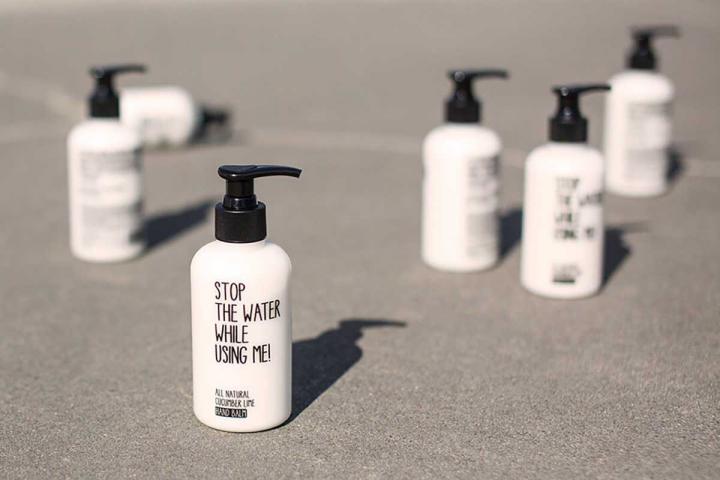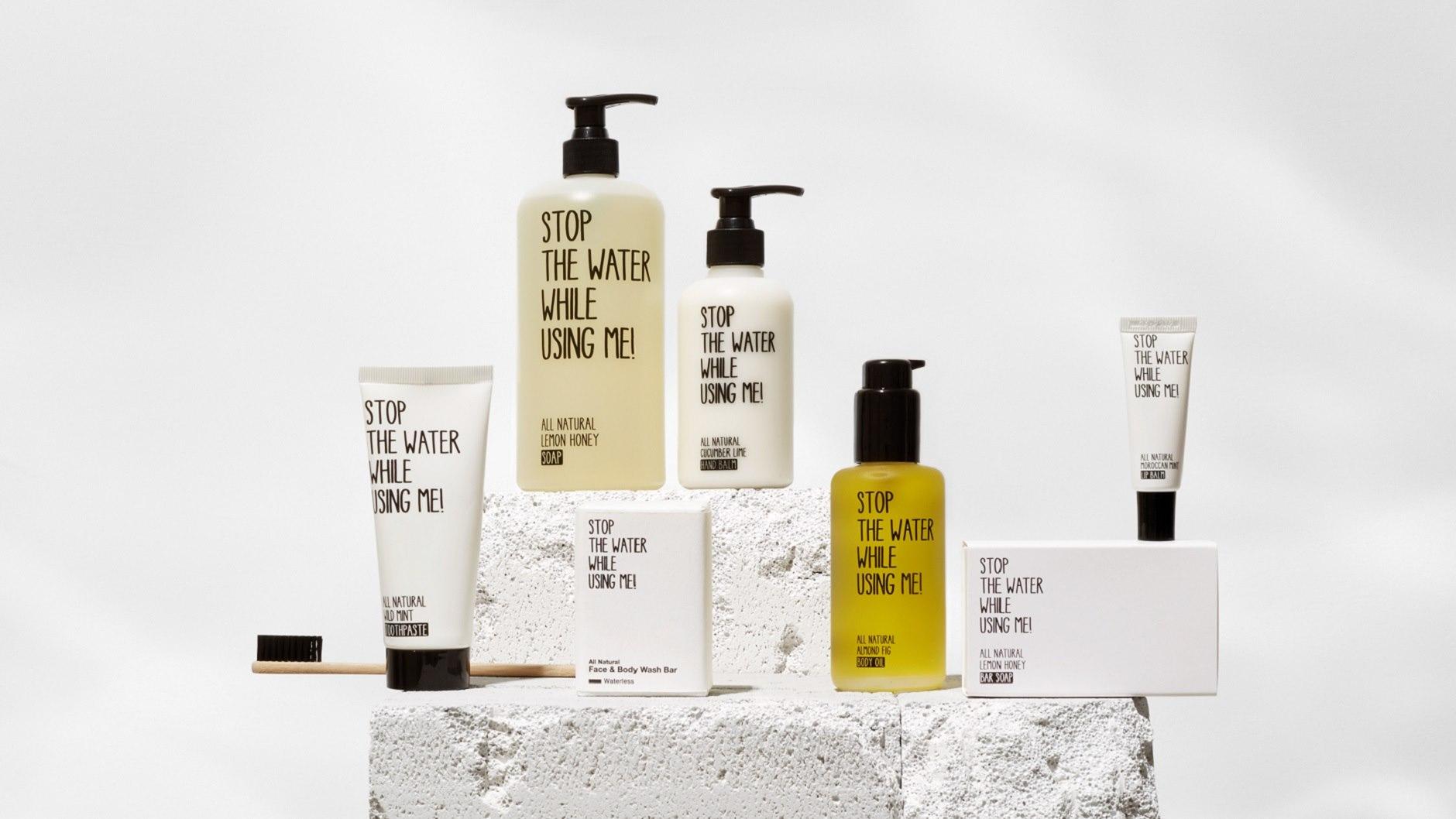

In this era of heightened eco-consciousness, “green chic” has become a lasting trend, transcending the ever-changing landscape of fashion. The resonance is evident: a profound concern for the environment, and consumers are willing to invest a premium in products that pledge to contribute to its preservation. Notable examples include Whole Foods’ organic offerings and Toyota’s Prius, showcasing how savvy companies strategically leverage trendy labels such as “sustainable” and “energy-efficient.” Explore the synergy between consumer trends and brand identity as companies align with the values of an environmentally conscious market. Discover how smart branding strategies capitalize on the appeal of eco-friendliness, shaping the narrative of modern consumer preferences.

(source: google)
Breaking new ground, a Hamburg-based company introduces a line of bath and body products where the brand name itself conveys a powerful green message: “Stop The Water While Using Me!” This impactful command is boldly presented in prominent black lettering on minimalist white bottles containing shampoo, shower gel, and toothpaste. Committed to sustainability, all products are crafted with organic and/or natural ingredients, housed in 100% biodegradable materials. The brand identity aligns with environmental consciousness, offering consumers a compelling choice for eco-friendly personal care. Dive into the intersection of brand identity and sustainability as this Hamburg-based company revolutionizes the market with its conscientious bath and body product line.
Employing the message-as-brand strategy, these products have adeptly carved a niche in a saturated market, evident in the substantial online buzz they’ve generated. This approach proves successful in setting them apart from the competition. Sold exclusively online at nearly double the price of typical drug store varieties, these products target eco-conscious consumers, known for higher income and discerning spending habits. Beyond affordability, the brand identity seamlessly merges personal comfort with environmental concern, highlighted by taglines like “Treat yourself well, and mother nature too.” Explore the impact of brand identity on market positioning and consumer loyalty, as these products redefine the landscape with their unique approach to messaging and product pricing.
But this bold marketing strategy faces numerous challenges. Although the brand’s unique angle has attracted plenty of attention, it may prove too one-dimensional for long-term success. Is 13 Euros for a shampoo bottle (plus 12.90 Euros for international shipping) worth it for what is essentially a daily reminder? Edwin R. Stafford, an associate professor of marketing at Utah State University’s college of business, says that only a very small percentage of consumers make their buying decisions primarily based on the environmental qualities of a product. Immediate availability, price, convenience and perceived green product effectiveness all factor into their ultimate choices.
The limited scope of these products extends to its target consumers as well. “Stop The Water While Using Me!” may only appeal to those who are already interested in environmental issues, and its narrow focus limits it from attracting a broader cross-section of the public. Its niche position in the market hinders brand revitalization—a weak spot that could be fatal in the future. The success story of Herbal Essences, another hair product brand, shows the importance of flexibility: When P&G acquired Clairol in 2001, sales were so scanty that retailers were threatening to stop stocking the brand. Market strategists decided to rejuvenate its look and shift its target consumers from the “every woman” to Generation Y. Bold neon colors gave the bottles a fresh face, while product names like “No Flakin’ Way” and “Totally Twisted” appealed to the new generation with a little bit of attitude. On the other hand, when it comes to “Stop The Water While Using Me!” the one dimensionality of its brand identity hinders it’s possible permutations.
Even the brand’s pivot point—its name—may be too long. Compared to most one or two word brand names, this six-word string creates a verbal identity that is easy to recognize but hard to remember and communicate. Given that the products are currently only sold online, sales are even more dependent on consumer recall than if they were placed on a supermarket shelf. Even if three out of the six words are typed into a search engine, the top indexed results have no relevance to the brand’s products.
Consumers gravitate towards brands that provide a compelling value proposition, encompassing functional, emotional, and self-expressive benefits that outshine competitors. To ensure long-term viability, “Stop The Water While Using Me!” may need to enhance its brand identity, broadening its appeal to a wider audience. Explore the evolution of brand identity as a strategic move to meet diverse consumer expectations and secure a lasting presence in the market. Uncover how this Hamburg-based company can leverage its unique messaging approach to adapt and thrive in an ever-changing landscape.
A Labbrand Group Company © 2005-2024 Labbrand All rights reserved
沪ICP备17001253号-3* Will be used in accordance with our Privacy Policy
To improve your experience, we use cookies to provide social media features, offer you content that targets your particular interests, and analyse the performance of our advertising campaigns. By clicking on “Accept” you consent to all cookies. You also have the option to click “Reject” to limit the use of certain types of cookies. Please be aware that rejecting cookies may affect your website browsing experience and limit the use of some personalised features.